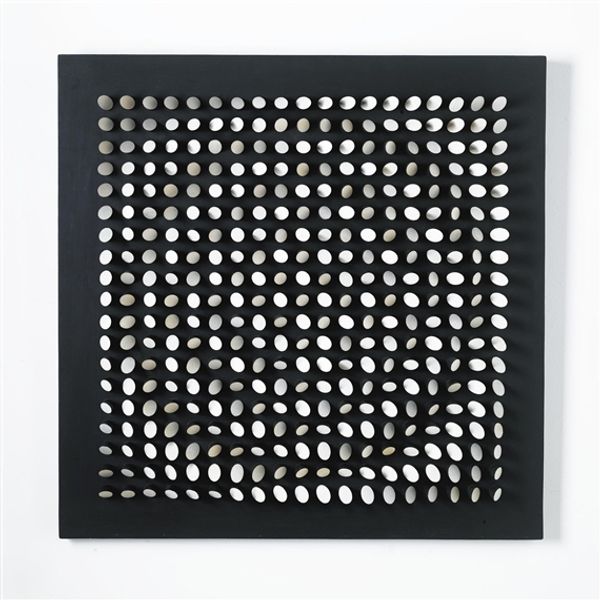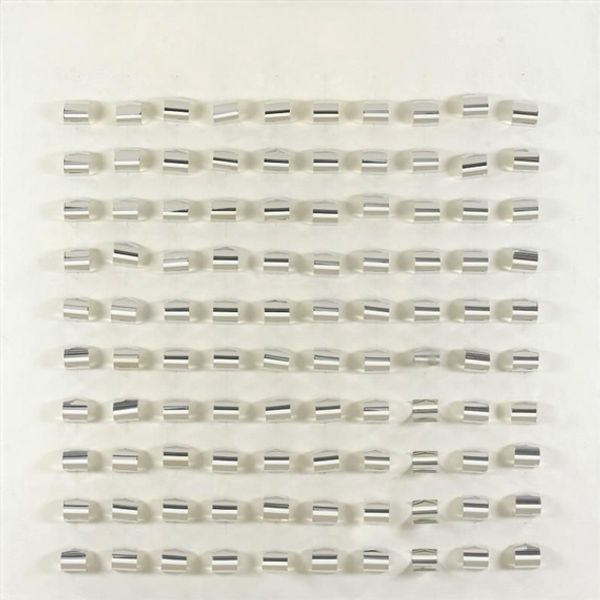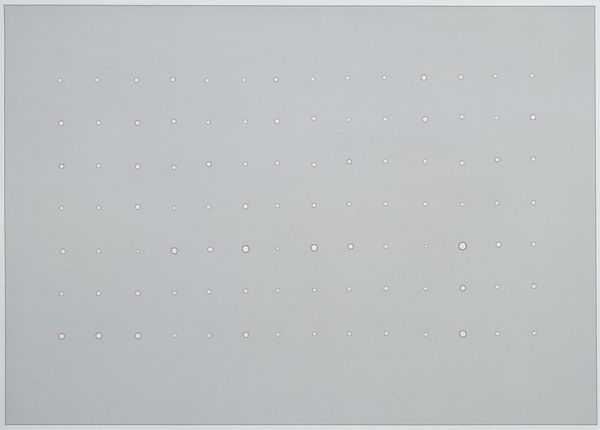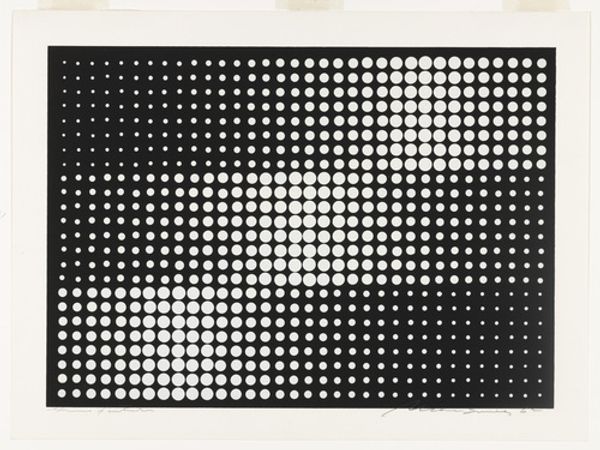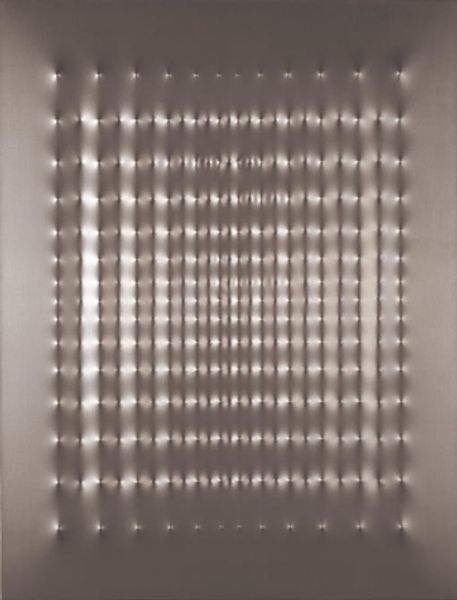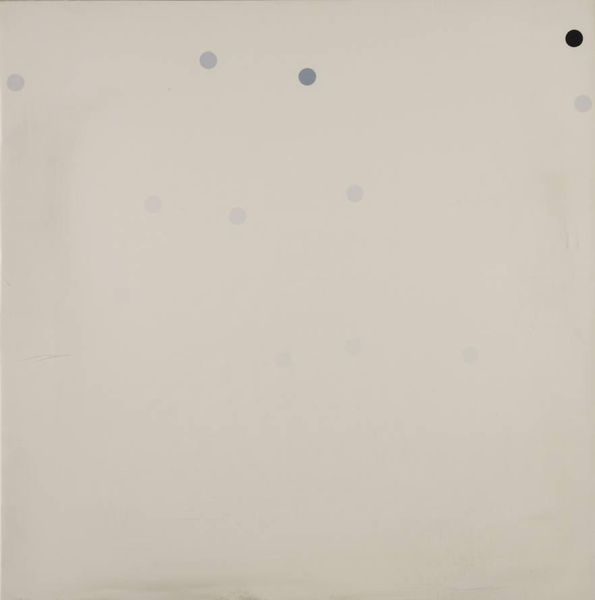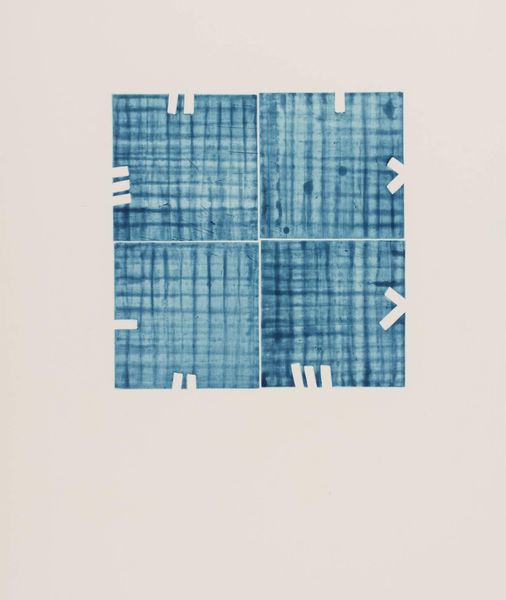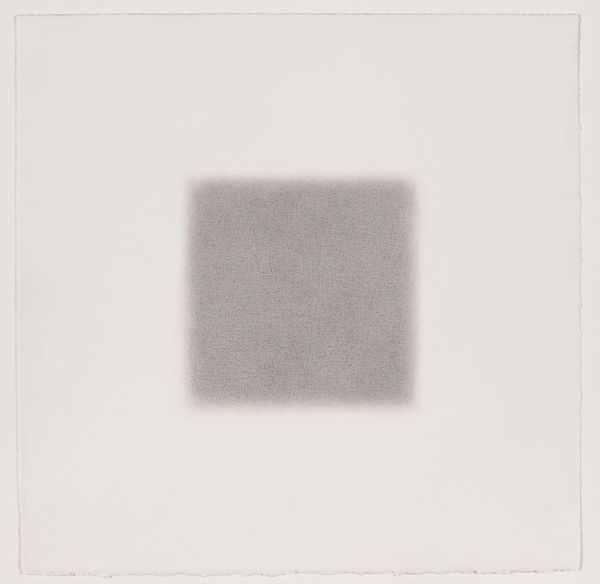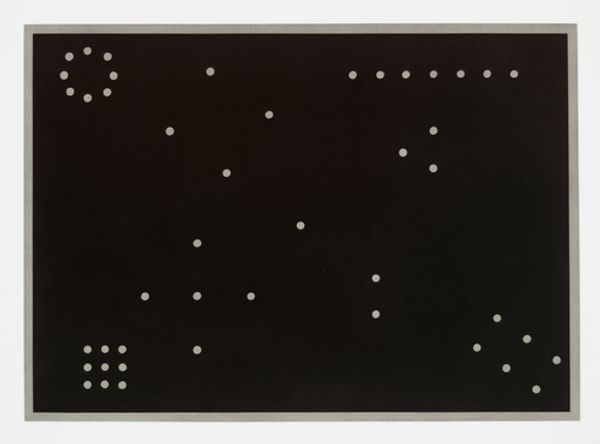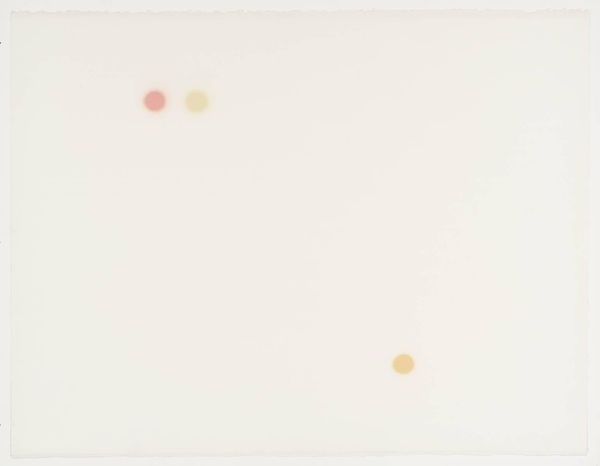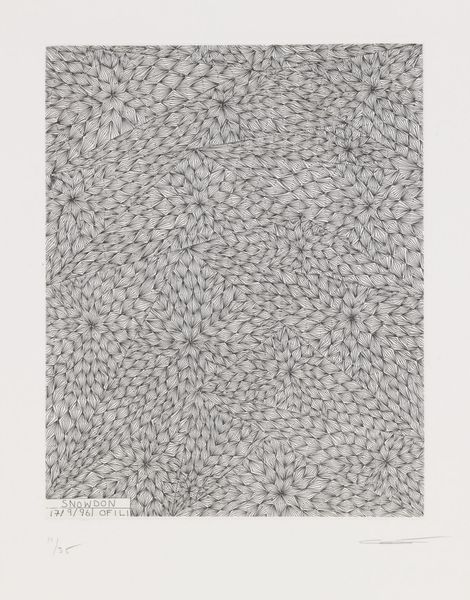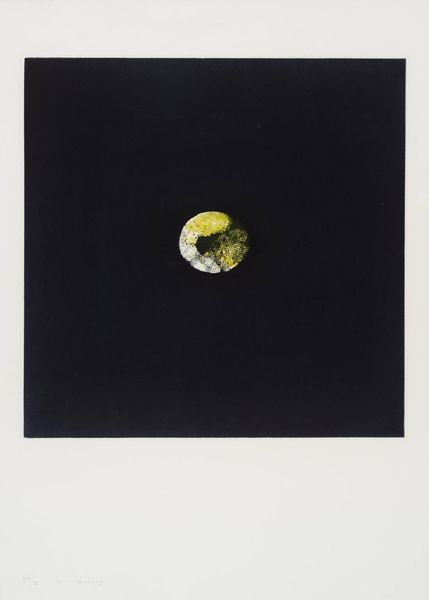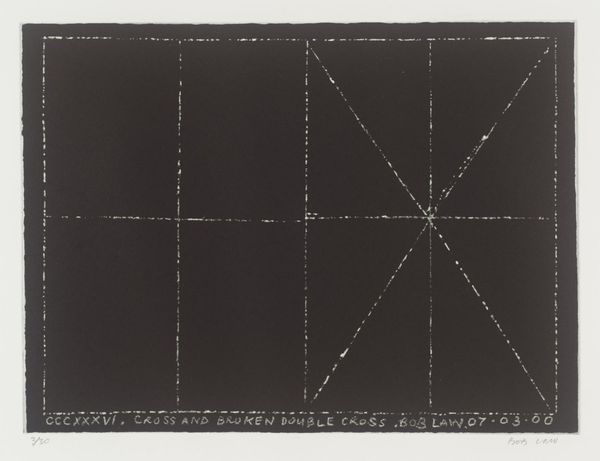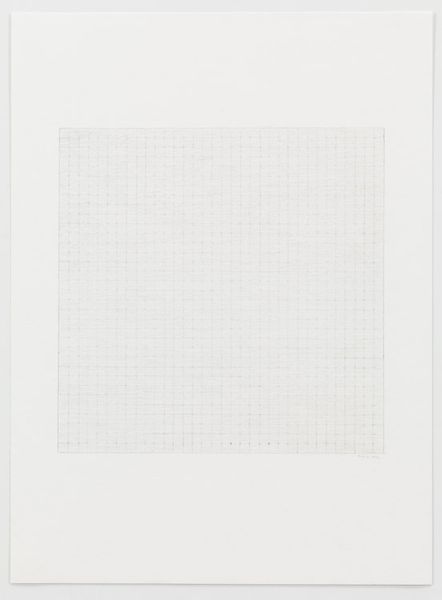
drawing
#
drawing
#
minimalism
#
geometric pattern
#
minimal pattern
#
organic pattern
#
geometric
#
geometric-abstraction
#
abstraction
#
line
Copyright: Eva Hesse,Fair Use
Curator: Here we have an Untitled drawing by Eva Hesse, completed in 1966. Editor: Oh, wow. My first thought is targets, but hazy, almost dreamlike. Like memories seen through frosted glass. What material did she use? It feels very delicate. Curator: Indeed, Hesse worked on paper here, creating those ethereal concentric circles with graphite and pencil. Editor: Concentric circles are everywhere; growth rings on trees, ripples in a pond, target practice. A sense of progression and expanding. The overall square matrix reminds me of architectural blueprints—the foundation for something else to grow on, I think. Is this characteristic of Hesse? Curator: That's perceptive. While Hesse is primarily known for her sculptural work using industrial materials, this drawing exemplifies her early explorations of form and repetition. These geometric experiments provided a foundation that informed the later three-dimensional works, and aligns perfectly with what was bubbling in the minimalism art movement at the time. It is hard not to look at this piece and recall how geometric structures were playing on canvases such as the works of Sol LeWitt or Agnes Martin. Editor: There is this sense of controlled freedom in that. Like these hard lines that contain these organic circular shapes... the soft pencil and faint texture almost vibrates against the hard edges that seem to hold them. Curator: Absolutely. It speaks to a dialogue between order and chaos that resonated with artists exploring abstraction at the time. I am intrigued by the visual matrix, and how one sees these intersecting lines over a series of circular motifs, offering an alternative viewpoint. Editor: You know, seeing the ghost of her process… like she allowed herself mistakes or imprecision. It’s kind of rebellious within a minimalist grid. Curator: Indeed. Thinking about it historically, Hesse’s move away from strict geometry toward more organic forms was incredibly important for post-minimalism. She showed how systems and grids could still house expressive, even imperfect, realities. Editor: It feels unfinished, and open for me to meet her halfway. This has sparked a desire to start drawing! Curator: Agreed! The drawing provides a key for unlocking and comprehending broader developments of art from the mid-sixties onward.
Comments
No comments
Be the first to comment and join the conversation on the ultimate creative platform.
